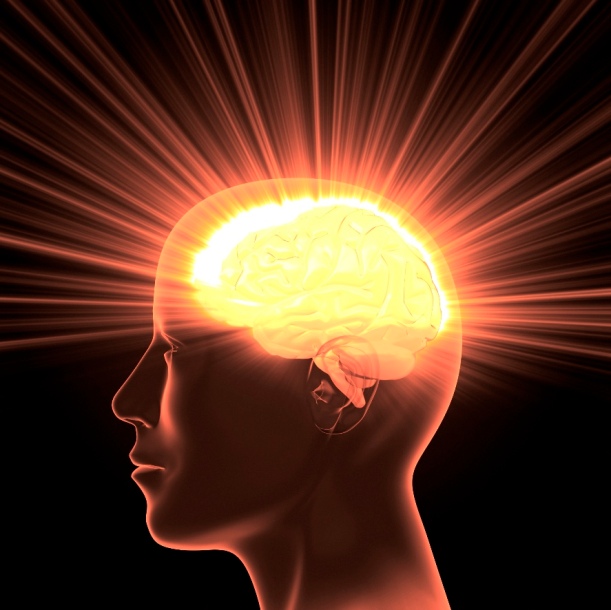 I think this is a sweet image
I think this is a sweet imageTime for the fourth and concluding entry for facts and fiction about the brain. I hope it’s been interesting for the reader, it’s been pretty fun to do! Without further ado, here are the final nine entries. The format will be the same, with a statement, then a declaration whether it’s true or false (or uncertain, which will appear more here) and an explanation.
1. People in northern countries are more susceptible to seasonal depression. Uncertain. For those with bipolar disorder, sometimes the winter depression alternates with summertime mania, and for those with Seasonal Affective Disorder people feel depressed, slow down, generally sleep a lot and overeat. This disorder primarily affects women and generally starts in early adulthood. In terms of latitude–how far north or south a country is–some early evidence pointed to a correlation between latitude and SAD, but a study done in 1993 in Iceland failed to confirm this and in general there is no strong evidence supporting this hypothesis.
2. Some people are incapable of producing any new memories. True! The inability to form new memories after an even is called anterograde amnesia. Henry Molaison is probably the most famous research subject in the history of brain science. Following an operation he lost the ability to form new memories (this was in 1957) and until the day he died (in 2008) he could retain any fact only briefly. He stayed about as smart as he ever was, and if he was given a series of six or seven digits he could recall them perfectly. However if he was given a list of words to study and then tested on them after other tasks had intervened, he could not repeat the list or even recall that there was a list! There is a fantastic movie about this very phenomenon called Memento, I highly recommend it.
3. We never really forget anything that we have experienced. Uncertain. Our memories are acquired rapidly and retained well, that’s for sure, even though they can easily become distorted. Research indicates that the memory trace (the record laid down in memory by a learning experience) doesn’t simply deteriorate from disuse and the passage of time. Although working memory, episodic memory and declarative memory abilities typically decline with age, other types of memory such as autobiographical memory and semantic knowledge tend to remain stable.
4. A stimulating environment can change the structure of an animal’s brain. True! Even within the individual life spans of rodents spatial learning can change the anatomy of the hippocampus. When animals under research are housed in small groups in lab cages we call this standard condition (SC). If they are housed individually in cages we call this impoverished condition(IC). When they are housed in large social groups in special cages containing toys we call this enriched condition(EC). In dozens of studies over several decades, EC animals have a thicker, heavier cortex, more dendritic branches which indicates more elaborate information-processing circuitry, larger cortical synapses, and even enhanced recovery from brain damage!
5. We can take in a whole visual scene in just a single glance. False! Because the brain has limited information-processing capacity, attentional processes have to provide a strict filter, sifting through the torrent of information coming in through our senses and selecting only the most important events for special processing. In a single glance, you perceive the details of objects accurately only in the center of your visual field. This difference in acuity across the visual field is the reason your gaze has to jump from place to place in a line as you read–your visual acuity falls off rapidly from the center of the visual field toward the periphery.
6. My brain decides what I will do next, before my conscious self is aware of the decision. Uncertain. Astonishingly, brain activity associated with making a decision may be evident in fMRI scans as much as 5-10 seconds before subjects are consciously aware of making a choice! In an experiment done in 2008, subjects decided for themselves when to press a button with either the right hand or the left. Scientists found they could predict beforehand when subjects would “decide” to press either button, and even whether they would press either button, up to 10 seconds before subjects were aware of their own decision.
7. People are “right-brained” or “left-brained.” False! The notion that the two hemispheres of the brain are so different that they need separate instruction is not supported by data. The notion that people can have “left-brain” or “right-brain” personalities is likewise a concept that lacks any scientific foundation.
8. A child can have half of the brain removed and still develop normal intelligence. True! In fact a boy showed paralysis on his right side as an infant, and by 5 years of age was experiencing 10-12 seizures a day. Doctors operated and removed all of his cerebral cortex of the left hemisphere of his brain, and at first his language capacity worsened but then it improved rapidly. Long-term follow-up studies extended until he was 26, when he had almost completed college. Tests revealed an above-normal IQ and superior language abilities!
9. Chimpanzees can use symbols to communicate. True! Chimps are capable of learning many of the hand gestures of American Sign Language (ASL). They’ve been reported to use signs spontaneously, and in novel sequences. Gorillas apparently also possess the ability to learn ASL signs in the hundreds. Chimps have also been able to learn two other symbolic interaction systems, such as Yerkish and a system involving the use of assorted color chips. Whether they can acquire and use rudiments of actual language though, is still controversial.
.
